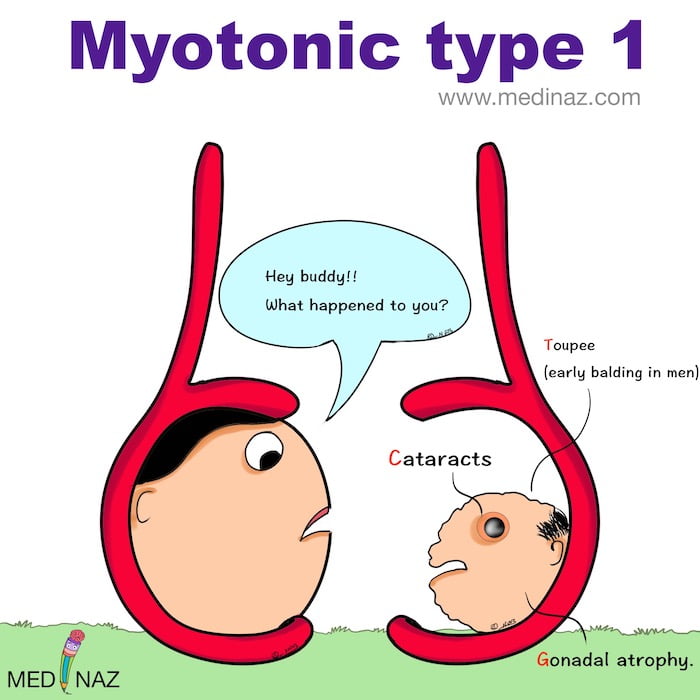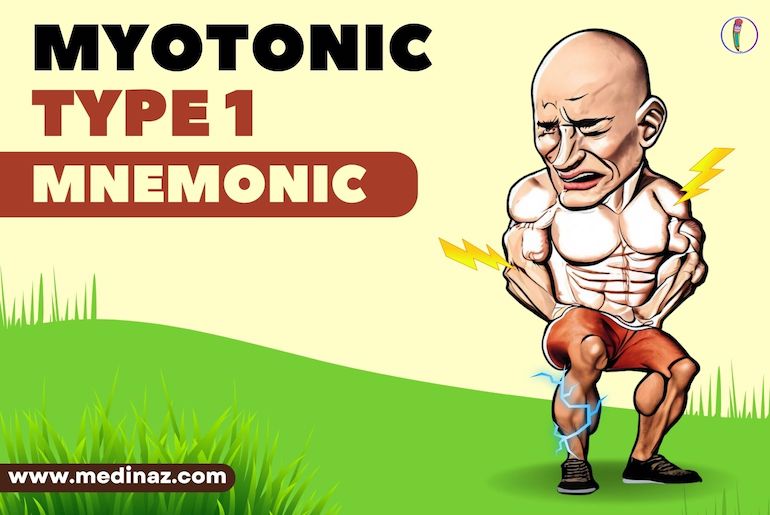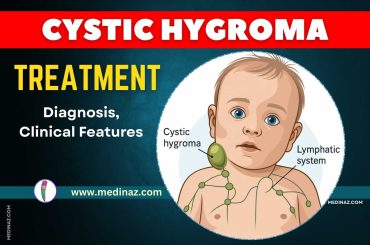Myotonic dystrophy type 1 (DM1) is a multisystem disorder that affects skeletal and smooth muscle as well as the eye, heart, endocrine system, and central nervous system[1].
The clinical findings, which span a continuum from mild to severe, have been categorized into three somewhat overlapping phenotypes: mild, classic, and congenital[1].
The clinical features of Myotonic dystrophy type 1 include:
- Myotonia: prolonged muscle tensing.
- Muscle weakness and wasting: Weakness and wasting of voluntary muscles in the face, neck, and lower arms and legs are common in type 1 myotonic dystrophy.
- Cataract: a clouding of the lens in the eye[1].
- Cardiac conduction abnormalities: abnormal heart function[1].
- Digestive tract and uterus involvement: The digestive tract and uterus (womb) often are affected in type 1 myotonic dystrophy.
- Myopathic face: A thin, sharp face due to wasting of facial muscles.
- Heart conduction abnormalities: Abnormalities in the electrical system that controls the heartbeat.
- Delayed development and intellectual disability: These are characteristic features of congenital myotonic dystrophy.
- Alopecia: Alopecia, usually called frontal balding, is a common finding in myotonic dystrophy type 1 (DM1), with a prevalence between 33.3% and 55%
Visual Mnemonic:

Management of Myotonic dystrophy type 1:
It is a multisystem disorder that affects skeletal and smooth muscle as well as the eye, heart, endocrine system, and central nervous system. There is no cure for DM1, but treatment focuses on managing symptoms and maximizing quality of life and independence. Here are some of the management strategies for DM1:
- Medications: Medications can be used to manage symptoms such as sustained myotonia, pain, and hypersomnolence. Examples of medications include sodium channel blockers such as mexiletine, tricyclic antidepressants, benzodiazepines, calcium antagonists, and nonsteroidal anti-inflammatory drugs.
- Rehabilitative therapy: Rehabilitative therapy can help manage muscle weakness, myotonia, and contractors. Examples of rehabilitative therapy include physiotherapy and speech therapy.
- Psychiatric therapy: Psychiatric therapy can be used to manage behavioral and psychological issues such as attention deficit, apathy, and depression.
- Ongoing monitoring: Ongoing monitoring can help avert or reduce complications seen at critical times.
- Genetic counseling: Genetic counseling can help individuals and families understand the inheritance pattern of DM1 and make informed decisions about family planning.
Citations:
[1] https://www.ncbi.nlm.nih.gov/books/NBK1165/You may also like other Medinaz Mnemonics: Click here
A Visual Learning Platform





